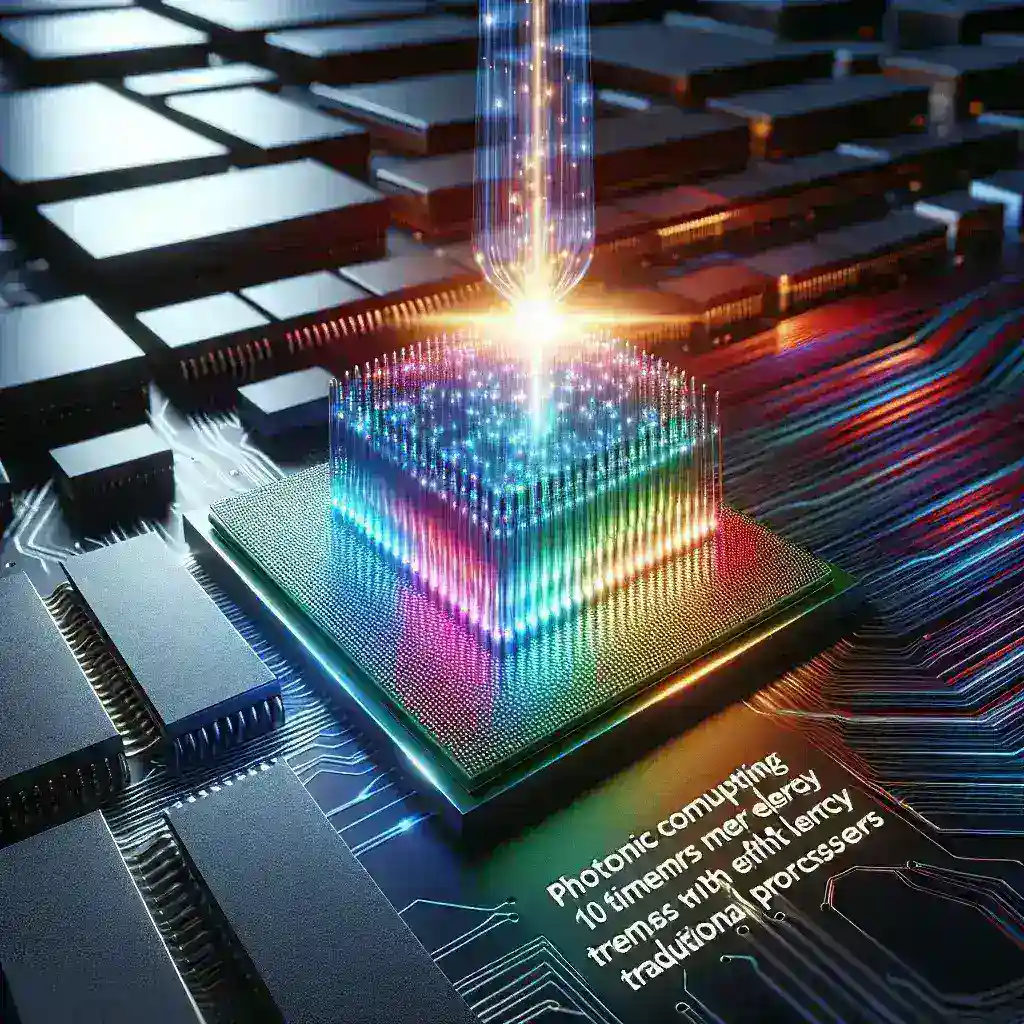
Photonic Computing Startup Achieves 10x Energy Efficiency Over Traditional Processors
Introduction
In a significant leap forward for technology, a photonic computing startup has announced its achievement of 10x energy efficiency over traditional processors. This breakthrough has not only captured the attention of the tech community but also raised questions about the future of computing. In this article, we will explore the implications of this innovation, the principles behind photonic computing, and the potential it holds for a more sustainable future.
The Evolution of Computing
To understand the magnitude of this achievement, it’s essential to look back at the evolution of computing. Traditional computing has been dominated by electronic processors, which rely on the flow of electrical currents. While these processors have enabled remarkable advancements, they also come with significant energy consumption issues and heat generation.
The Birth of Photonic Computing
Photonic computing, on the other hand, utilizes light (photons) instead of electrons for processing information. This approach allows for faster data transmission and greater efficiency. The concept of using light for computing has been explored since the 1980s, but only recently have advancements in technology and materials made practical implementations feasible.
How Photonic Computing Works
At its core, photonic computing relies on the manipulation of light at the nanoscale. By using optical components such as waveguides, lasers, and modulators, data can be encoded in light signals. These signals can then be transmitted at the speed of light, vastly outpacing traditional electronic signals.
- Key Components:
- Waveguides: Channeling light through various mediums.
- Lasers: Generating coherent light for processing.
- Modulators: Converting electrical signals into optical signals.
10x Energy Efficiency: What It Means
The claim of achieving 10x energy efficiency is not just a marketing slogan; it has profound implications for the future of technology. Traditional processors consume a considerable amount of power, and as data centers expand, this consumption only increases. With a 10x efficiency gain, the startup’s photonic processors could significantly reduce the operational costs and carbon footprint of data centers.
Impact on Data Centers
Modern data centers are the backbone of cloud computing and Internet services. However, they are notorious for high energy consumption and the heat they generate, requiring expensive cooling systems. By implementing photonic computing, data centers could operate more sustainably, decreasing their reliance on fossil fuels and reducing greenhouse gas emissions.
The Broader Implications for Technology
Beyond data centers, the implications of this technology stretch into numerous fields including artificial intelligence, machine learning, and even telecommunications. As data processing demands increase, the ability to handle vast amounts of information efficiently becomes critical.
AI and Machine Learning
Artificial intelligence relies heavily on processing power for learning from massive datasets. As photonic computing scales, it could provide the necessary boost in efficiency and speed that AI applications require, enabling real-time data processing and analysis.
Telecommunications
In telecommunications, the need for high-speed data transfer is ever-growing. Photonic computing could enhance the capability of networks, improving both the speed and efficiency of data transmission. This has the potential to revolutionize how data is transmitted globally.
Challenges Ahead
While the potential of photonic computing is immense, several challenges remain. The technology must overcome issues related to integration with existing systems, scalability, and cost-effectiveness before it can achieve widespread adoption.
Integration with Existing Systems
Transitioning to photonic computing requires an overhaul of current infrastructure. Many organizations may be hesitant to invest in new technology when their existing systems are still functional. Therefore, demonstrating clear benefits and ease of integration will be crucial for adoption.
Scalability
Scaling photonic devices to a level that matches or exceeds traditional processors is another hurdle. As with any emerging technology, ensuring that it can scale to meet the demands of large-scale operations is critical. Research and development are ongoing to address these challenges.
Conclusion
The achievement of 10x energy efficiency by a photonic computing startup marks a pivotal moment in the tech industry. By harnessing the power of light, this innovation not only offers a sustainable solution to the energy crisis facing traditional computing but also opens doors to unprecedented speed and efficiency in processing data. As we look towards a future intertwined with technology, embracing such advancements is essential for a greener and more efficient world.
A New Era of Computing
As the startup pioneers this technology, it will undoubtedly inspire further exploration and investment in photonic computing. The implications of such a leap could reach far beyond energy efficiency, potentially changing the landscape of technological development and usage for years to come.




Leave a Comment